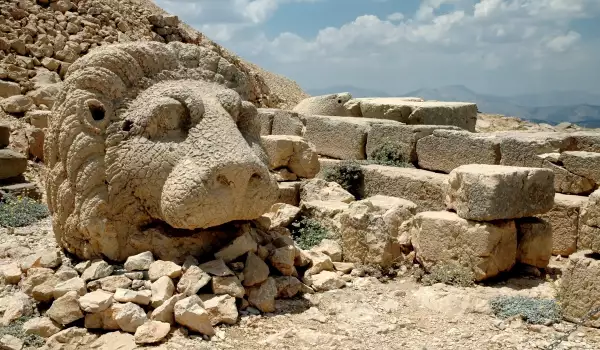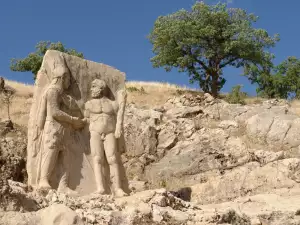Mount Nemrut

Mount Nemrut is a mountain in southeastern Turkey, in Kahta. This historic peak, known for the ancient tomb of the peak - Nemrut Dagi, which reaches a height of 2150 meters. Nemrut with its tombs is left by Antiochus I and stands near the top of Ankara in Anatolia, 60 km from Malatya in southeast Turkey. Nemrut is located in the remote southeast, near the town of Adıyaman in Eastern Anatolia, and is near the village Karadut.
In 1989, Nemrut Dagi and its environs were declared as national park Nemrut, a 1987 historic peak, which is included in the list of World Heritage Sites by UNESCO. Mount Nemrut is located about 40 km north of the city Kahta, near Adiyaman, which is the best starting point to visit the ruins.
The biggest tourist flow to Nemrut is between June and August, but in the cool autumn weather, a prerequisite for enjoyment, is climbing the mountain plateau to the tomb. Nemrut is easily reached by car from Adimayan but also has arranged coaches. It is possible that even a helicopter can land at Nemrut.
In south-east Anatolia, but also over Turkey, Mount Nemrut is an important historical memory of antiquity. Adimayan town itself was founded in the 7th century by the Omayyads, who came from Damascus, together with the Mongolian Selcuks, Memluks, Ottoman Turks and other people. Among the city's attractions are the Adiyaman Citadel, which dates from the 8th century, as well as Abdulgani Mosque, from the 16th century.
Of course most of the tourists come to town to head to Mount Nemrut and its tomb. A German traveler on the Silk Road from the last century, wrote of the land near Nemrut : "Oak and pine covered hills. The valleys are filled with figs, olives, nut trees, and pomegranates. Vineyards alternate with fragrant oleanders, drunk with that sweetness. Corn fields do not give such a plentiful harvest anywhere else". On the mountain itself, there is no sign of such images, but the tomb is still there.

The tomb of Mount Nemrut was discovered in 1881 by German engineer Charles Sester, which dealt with the Ottoman transport routes. He is the only specialist who conducted excavations at historical sites. Then excavations failed to reveal the actual tomb of Antiochus, but to the world was shown a huge head of the ruler and the other such things.
The tomb of Mount Nemrut was surrounded by huge statues of Antiochus and the Armenian deities embodied in the shape of an eagle or a lion. Reaching a height of 9 meters, the giant heads were cut off from their bodies and scattered over the rocky plateau of Nemrut.
The trail left by the heads suggests that they were intentionally removed during the iconoclasm. The complex of Antiochus, who runs between 69 and 36 BC, has a preserved stone inscription which states that the ruler had built this place for ages and generations to come as a thanksgiving to the gods and their ancestors.














